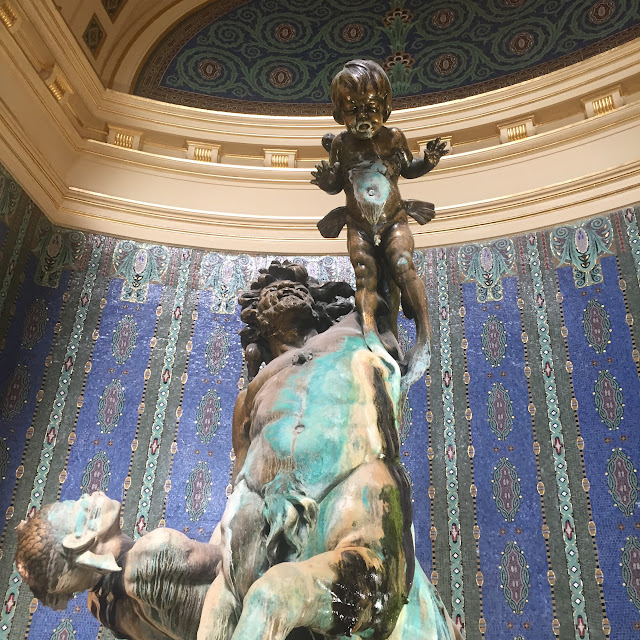Okay, so I promise this is the last post on Hungary, and then I'll move on to the other 4 weeks of our European adventure. This is a picture of all of us fitting into the quintessential Eastern-European car: the Trabant. It was a popular car during the Communist Era in Hungary. Jennifer and I loved it. Craig, well, he endured it.
The Trabant, or Trabi (pronounced "trow-bee"), was built in East Germany. Over about 30 years, more than 3 million were produced. They had a two-stroke engine and the doors were made of plastic. Once East Germany was united with West Germany, production halted as the costs of producing the out-dated cars were too high to be economically feasible. This one obviously doesn't work anymore...
...but we did see a few working models being driven today!
Budapest, and most of Hungary, sits on top of many natural hot springs. The Romans, and later the Turks, used these hot springs to power their bath houses. Today, the Romans and Turks are gone, but the bath houses remain. Here we are at one of the largest bath houses, the Széchenyi Fürdő.
It was built in 1896 (a popular year for building in Hungary). Here is a depiction of a satyr holding up a mer-child near the main entrance.
We also visited the Dunapalota, or Danube Palace, to see some traditional boot-slappin' Hungarin folk dance!
Of course, one of the highlights of Hungarian culture is Hungarian cuisine! I love Hungarian food! Here is Jennifer and Craig at the Nagyvásárcsárnok, an indoor food market built - you guessed it! - in 1896.
It's as big as a train station, with food vendors on the basement and main levels, and a sort of handicraft or flea market on the second level.
You can buy a myriad of fresh fruits and vegetables, including the amazingly tasty white Hungarian pepper.
You can also buy meats, cheeses, juice, and everything else needed for a real Hungarian breakfast!
Typically the vásárcsárnoks have restaurants, where you can sample the most Hungarian of all Hungarian food: paprikás csirke! Yum!!
I love the Hungarian subways. I know Budapest from below ground. After a few days we figured out that it was faster to walk to some places instead of taking the subway - but I really only know the city from the network of Soviet-era trains that speed below the surface of Budapest.
They are very safe, and are being upgraded slowly. A new line, the M4, just opened last year. This line, the M3, still uses the original blue train cars. I think by the next time I visit, it will be a shining new German built white train like the newly refurbished M2 line.
Thank you Hungary, and thank you all of our Hungarian friends for the awesome memories! Isten álld meg a Magyárt!





































